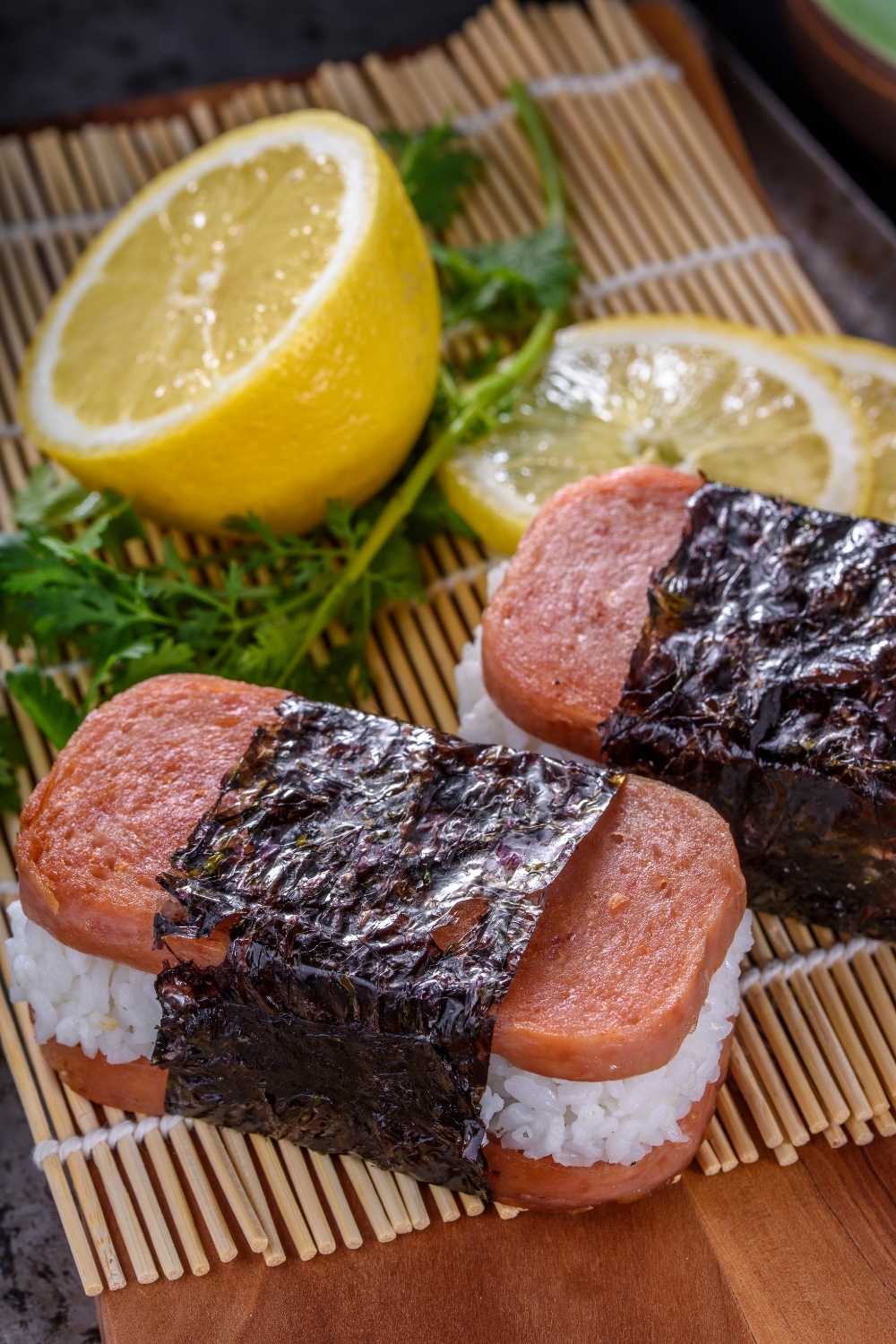Although I only eat it about once or twice a year, I love Spam. Why, you may wonder? Processed meat is a no-no on most healthy food lists. And my particular dietary needs dictate minimizing processed foods.

However, when I do have my favorite pumpernickel, mayonnaise and Spam sandwich, it engenders such comfort and satisfaction!
Brings back warm childhood memories, when Spam and government cheese was all our family could afford at the time.
Why people put Spam on the worst food list is really beyond my comprehension!
Today, sold in 44 countries around the world, Spam is beloved in Hawaii and South Korea.

History of Spam
Spam’s history as a necessary food staple is quite long and extraordinarily interesting.
Spam was created by the Hormel Corporation in 1937. Spam consists of processed pork shoulder, water, salt, potato starch, sugar, and sodium nitrate.
Its delectable birth began in 1891 in Austin, Minnesota, aka, “Spamtown” when George A. Hormel established a slaughterhouse and meat packing facility after years of working in similar facilities in Chicago.

During the course of its evolution, various derivatives of Spam known as deli pork luncheon meat evolved.
And so, in 1937, Spam, as we know it today, was born.
According to Jay Hormel, George’s son, the name Spam was the creation of a Hormel VP’s brother, Kenneth Daigneau. Kenneth responding to a New Year’s Eve party product naming contest, spat out the word “Spam”.
Several Spam acronyms have evolved through the years –
“Scientifically Processed Animal Matter”
“Spice and Ham
“Should of Pork and Ham” and so on.

American housewives were slow to accept canned meat as a household staple.
It was, however, the advent of World War II that created the high demand for canned meat products.
Over 100 million pounds of Spam alone was sent to American as well as Allied troops.
Although not very popular among the troops, having canned meat that had a long shelf life and was climate friendly. Spam proved to be extremely beneficial to the overall war effort.

Post WWII Spam
After WWII, while most of America shifted its focus of Spam as a main course to that of a side dish. Folks in Hawaii and the Asia Pacific region fell in love with it.
At that time, America’s Spam influence had more appeal internationally than it did stateside.
At the end of WWII, residents in Korea and Japan were on the brink of starvation. America’s canned Spam to the rescue.

Spam gained an even stronger foothold with the residents in Korea during the Korean War.
Today, Korea is the second largest consumer of Spam in the world where it’s also revered as a luxury food item.
Interestingly enough, Spam’s popularity in Hawaii was a direct result of the U.S. government’s severe restrictions of deep sea fishing. This restriction was because of Hawaiian Japanese fishermen during WWII.
And as a result, Spam became a primary protein source for the residents of the Hawaiian Islands.

Who eats the most Spam today – why, of course the U.S.
The culinary world’s love/hate relationship with Spam continues to ebb and flow.
Its enormous popularity, however, in places like Hawaii, Korea, Japan, and the Philippines makes you really wonder why “some people” find it so distasteful.
The intense negative feeling about Spam is not necessarily shared by other canned meats like tuna, chicken, salmon, ham, Vienna sausage and so on.
After all, Spam is just seasoned canned pork shoulder…and pork of all types is a favorite of barbecue lovers all across America.
Just makes you wonder…




